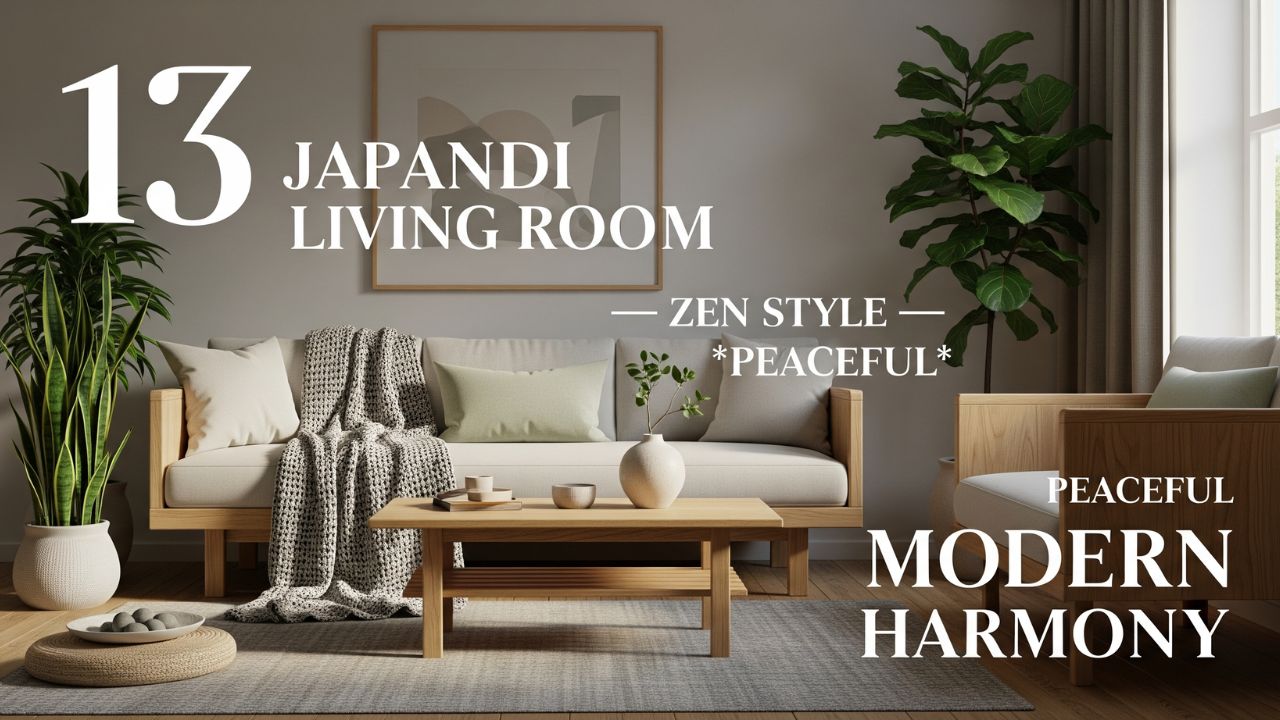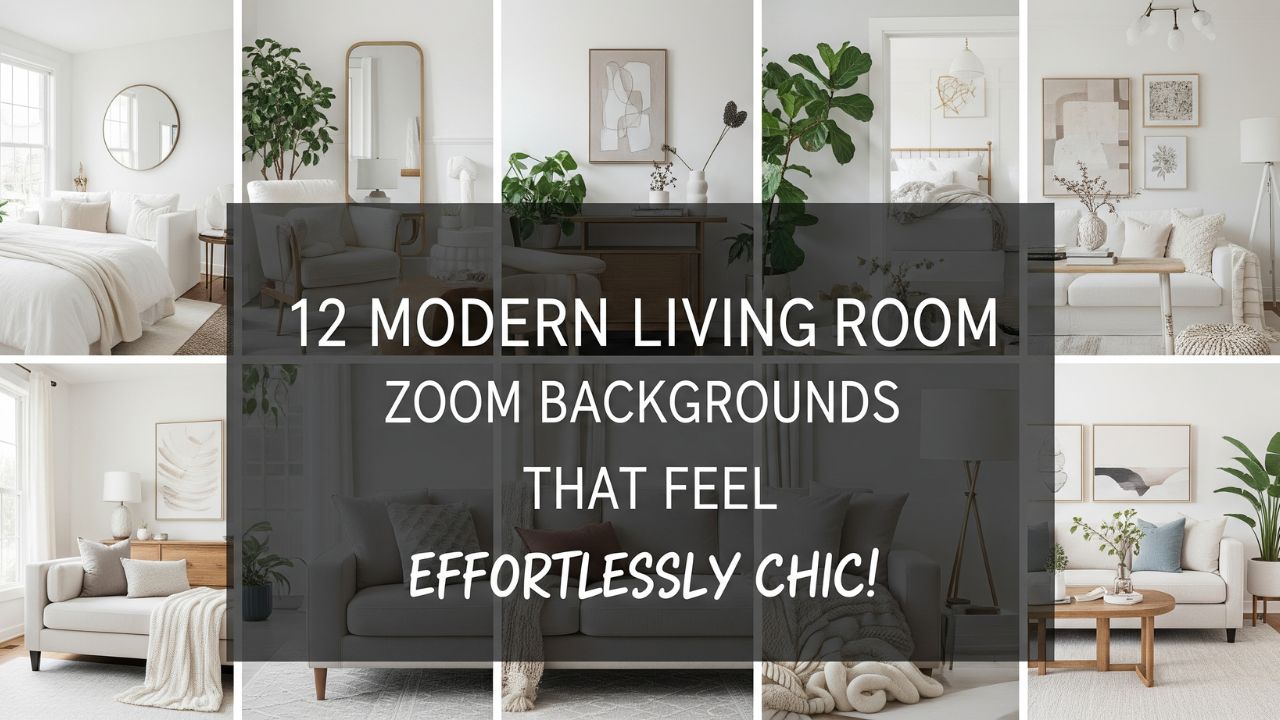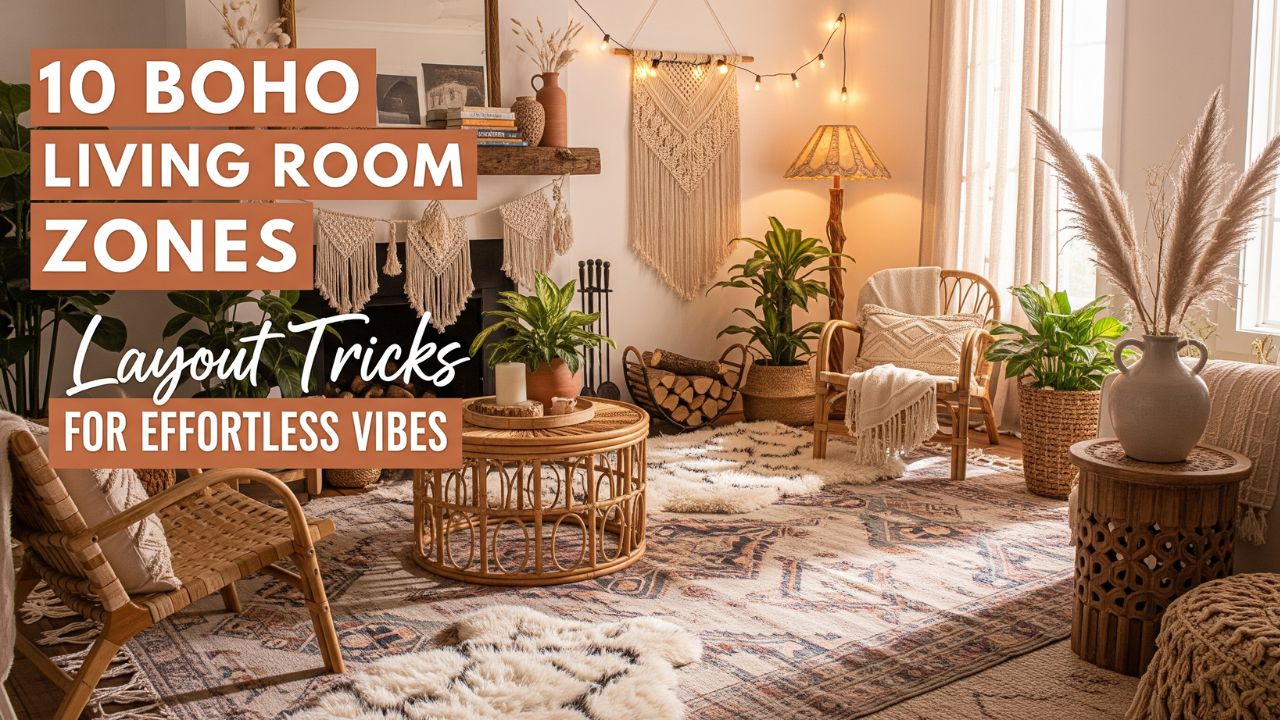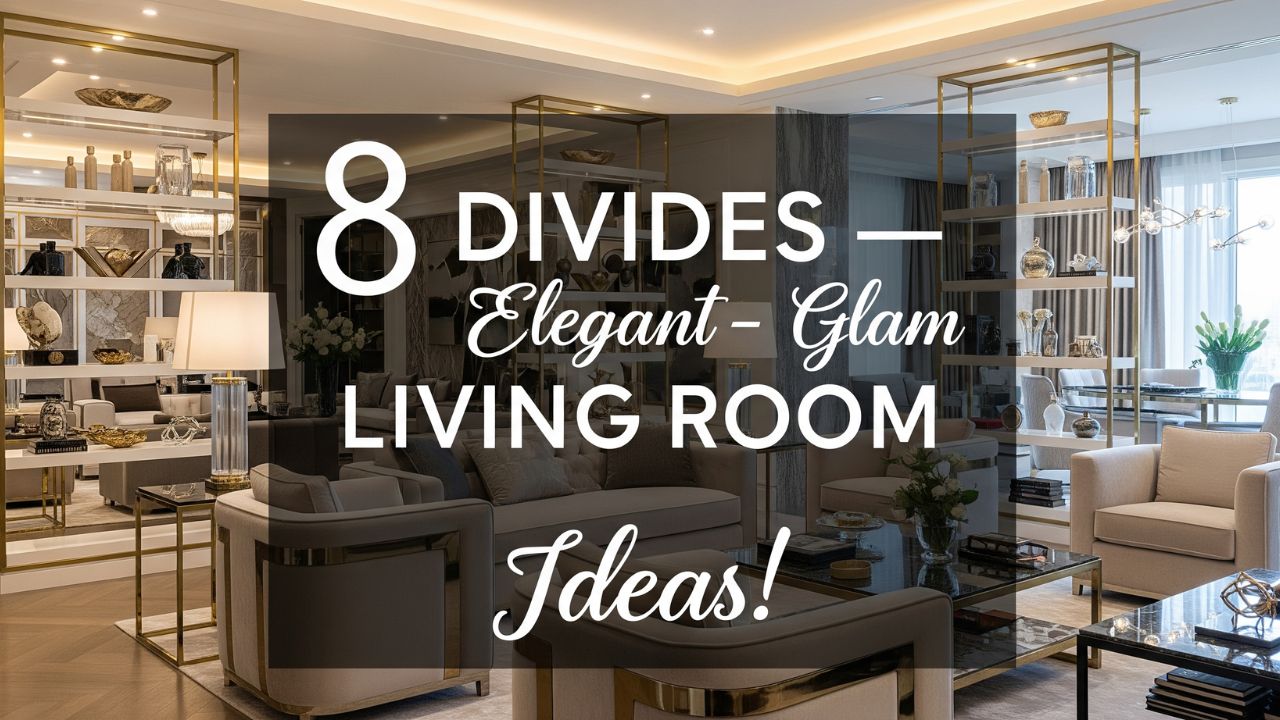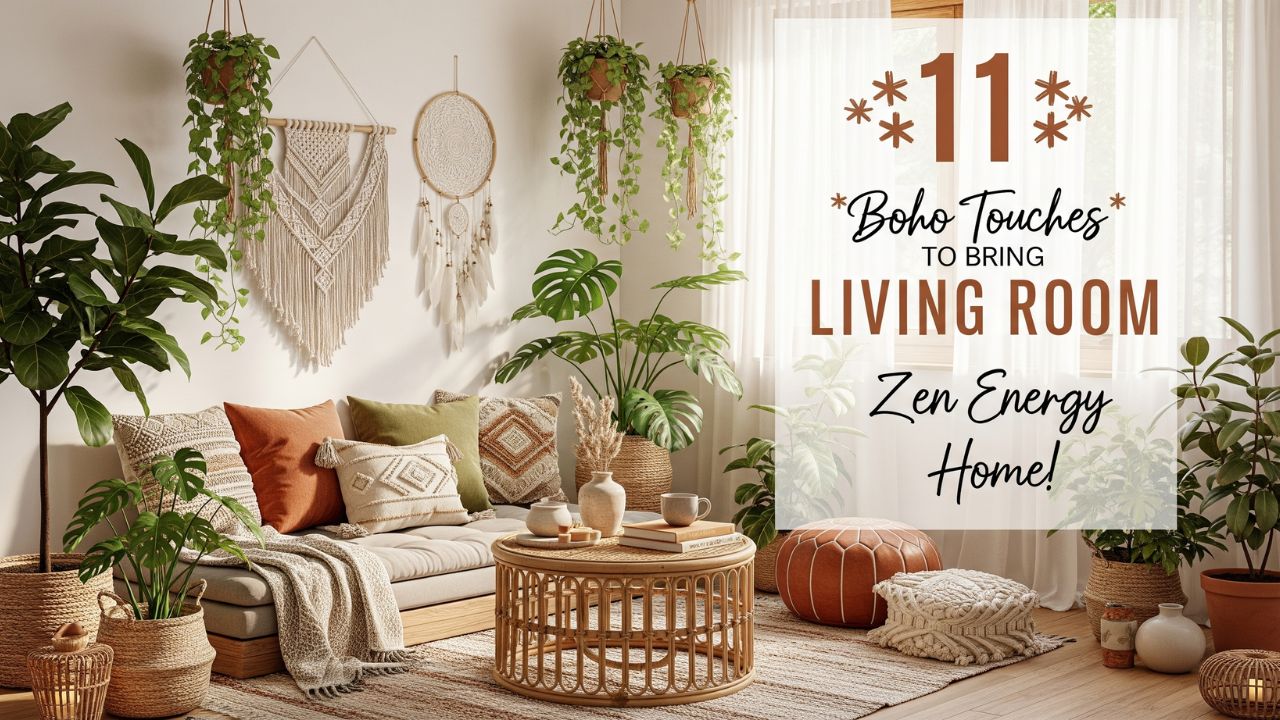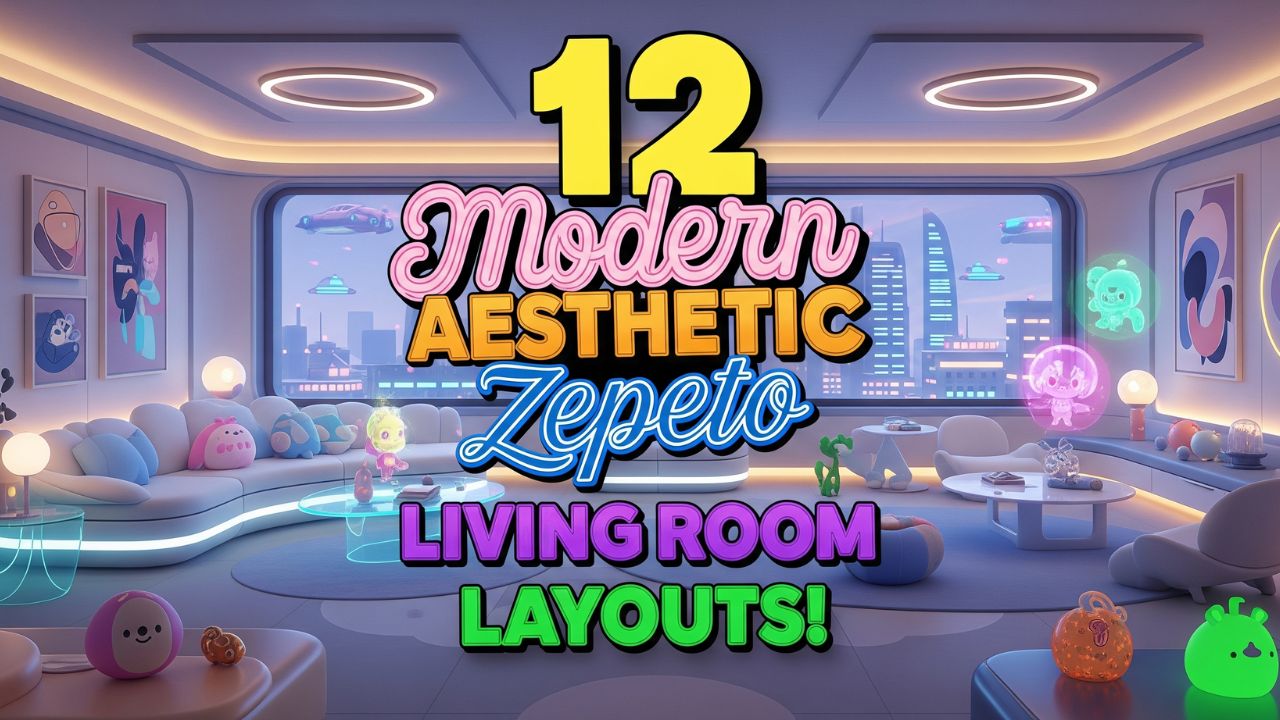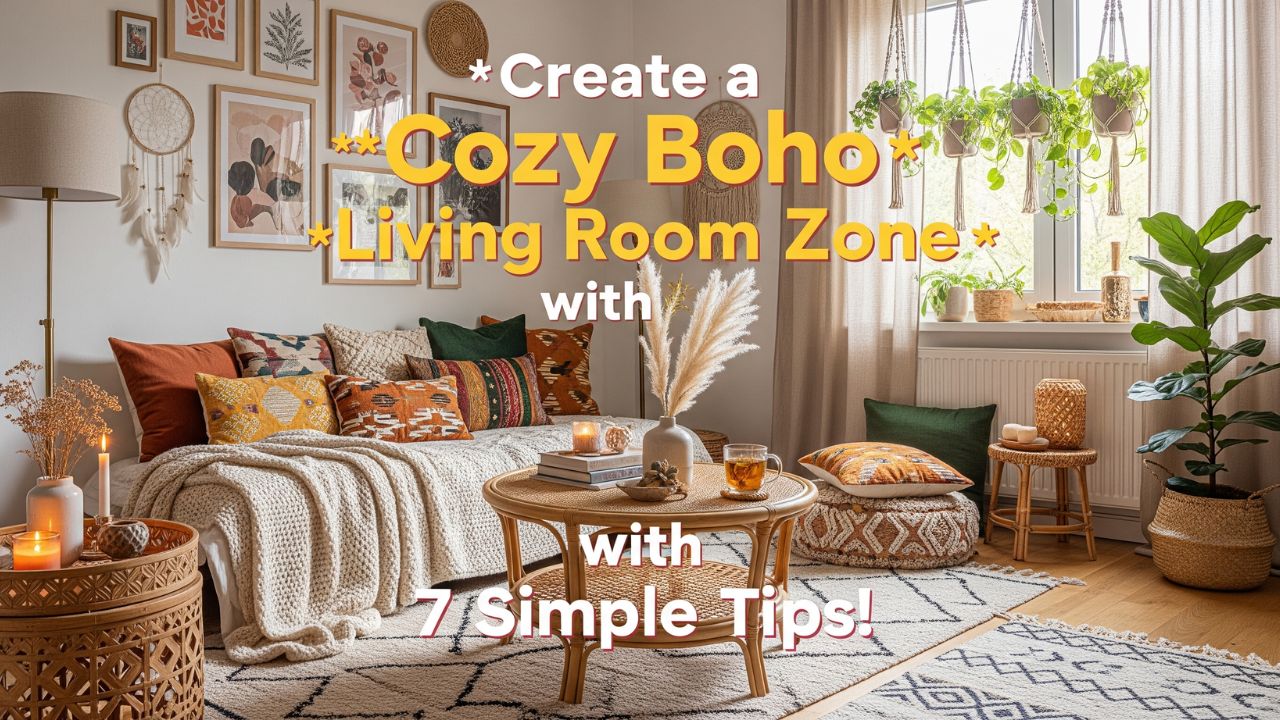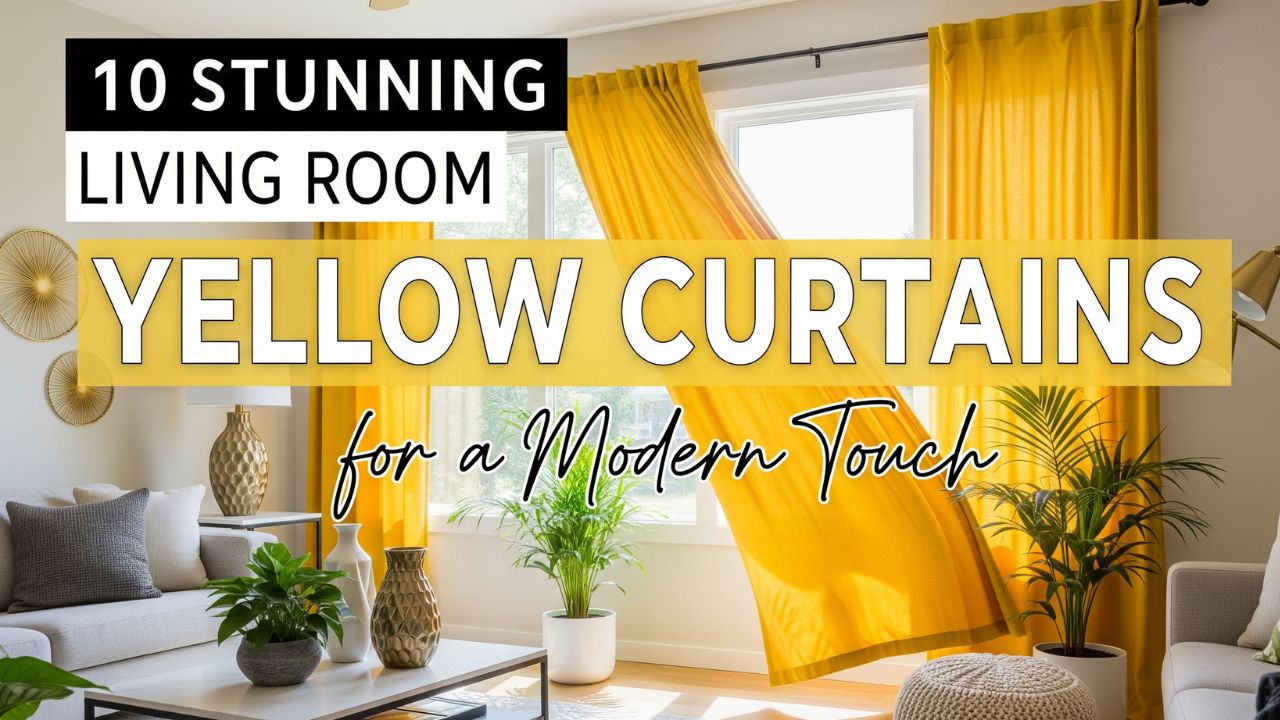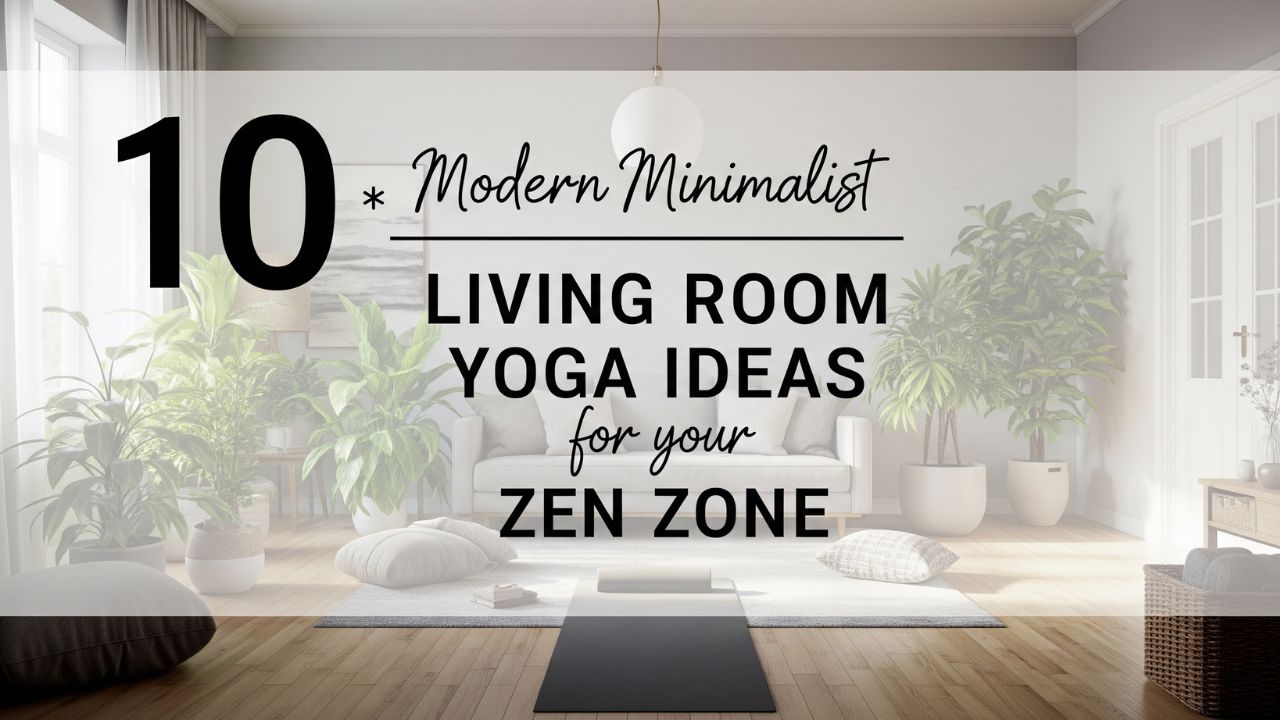In a world overflowing with noise, clutter, and constant motion, the Japandi living room stands like a soft whisper of peace.
It’s the space where Scandinavian functionality meets Japanese mindfulness — a design philosophy that blends “less is more” with “purpose in every piece.” The result? A living room that feels calm, grounded, and alive with quiet beauty.
If your soul craves simplicity, harmony, and balance — Japandi design might just be your new obsession.
Do you know? The term “Japandi” was born out of two cultures oceans apart, yet both sharing a deep respect for craftsmanship, nature, and intentional living. While Japan focuses on wabi-sabi (beauty in imperfection), Scandinavian interiors embrace hygge (comfort and coziness). Together, they create a lifestyle, not just a look.
Let’s explore 10 Japandi-inspired minimalist living room layouts that redefine modern serenity — each design idea crafted to help you breathe deeper, live slower, and find peace within your own four walls.
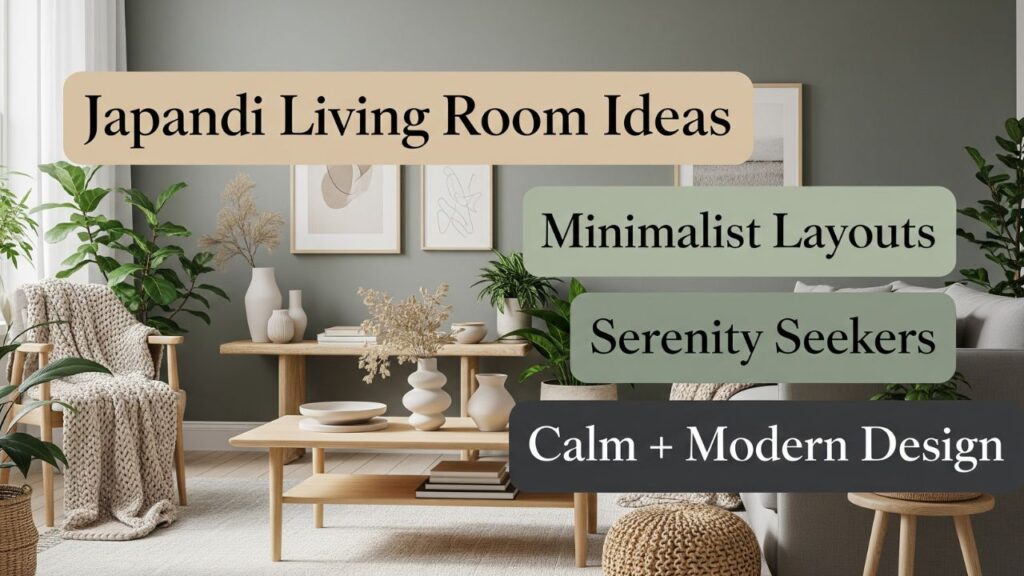
Table of Contents
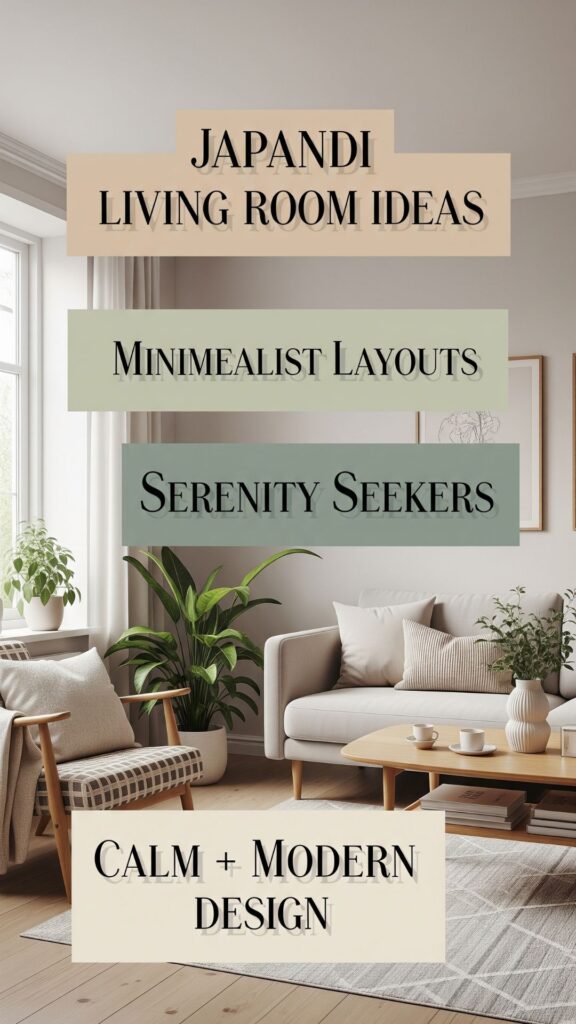
10 Japandi-Inspired Living Room Minimalist Layouts
1. The Zen Corner Layout
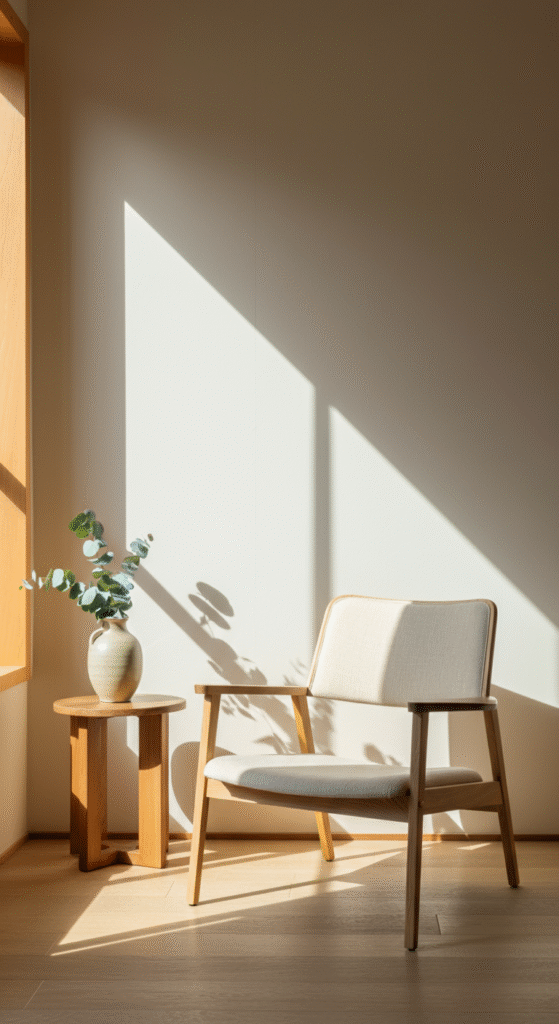
Start small, start quiet. The Zen Corner layout brings focus to one peaceful zone — often by a window, near sunlight, or facing your garden.
A single armchair, a low wooden table, and a ceramic vase with a sprig of eucalyptus can turn this corner into your daily mindfulness spot.
Keep the walls pale beige or muted sand. Let light filter naturally. The goal is not decoration — it’s presence.
Interesting fact: In traditional Japanese interiors, the concept of “Ma” — the space between objects — holds spiritual importance. It’s not emptiness; it’s breathing room for your mind.
2. The Floating Furniture Layout
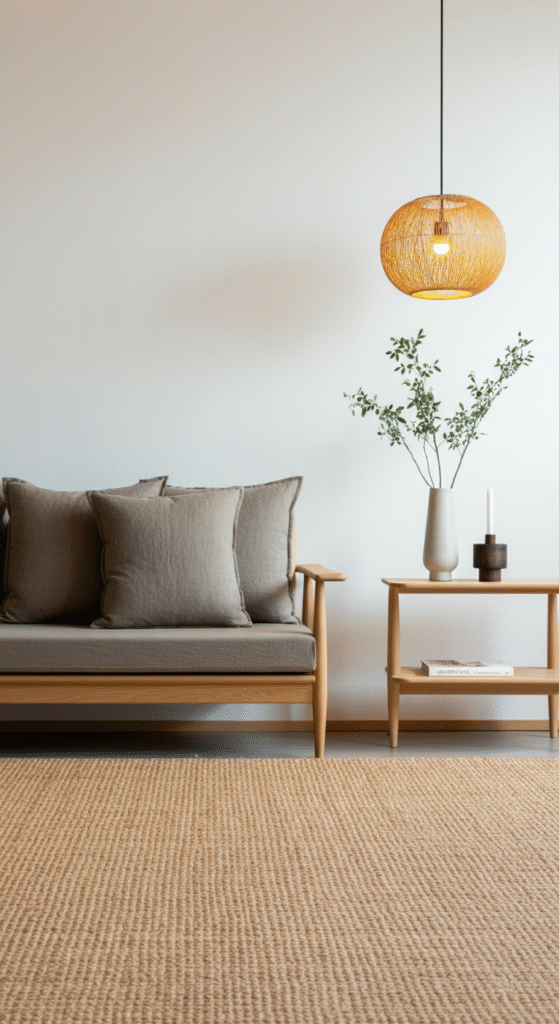
Japandi living rooms love open spaces and visual flow. Try a floating layout — pull your sofa and coffee table a few inches away from walls.
This trick not only enhances movement but also gives a sense of balance and airiness. Choose furniture with raised legs, like light oak or bamboo frames.
Combine them with woven rugs and linen cushions in muted taupe, cream, or stone gray. This setup invites calm while maintaining functionality.
Remember, every object should “float,” not dominate.
3. The Nature-Framed Layout
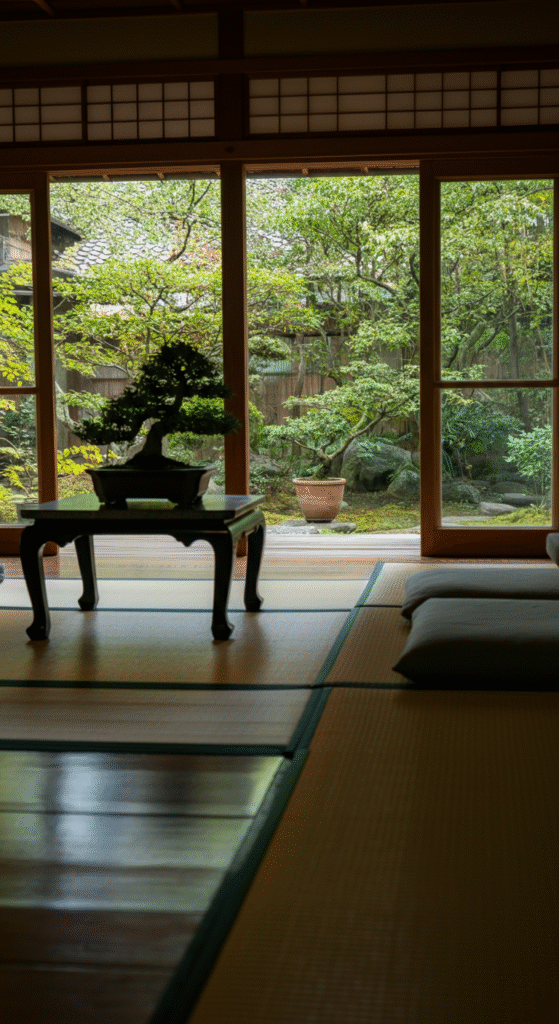
Bring the outside in — literally. This layout focuses on framing your living room around natural light and greenery.
Arrange your furniture to face a large window or sliding door, allowing your view to become part of the design.
Add potted plants in clay or stone containers. Go for Japanese maples, bonsai, or peace lilies for authenticity.
Did you know? Studies have shown that natural textures and greenery reduce stress levels and boost creativity — a cornerstone of Japandi’s wellness-driven design.
4. The Earth-Toned Harmony Layout
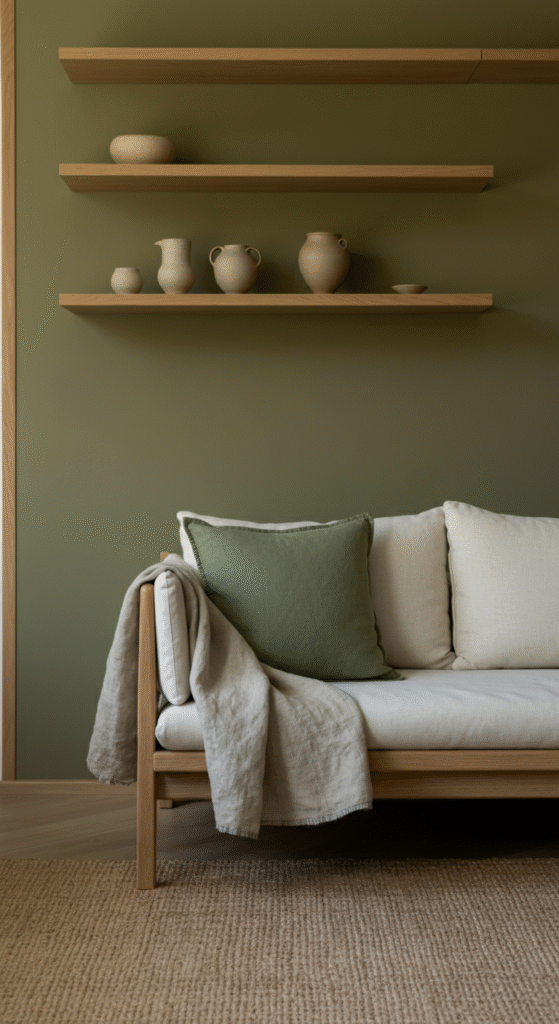
This layout thrives on earthy color harmony — a palette inspired by sand, stone, and wood.
Use off-white walls, oak furniture, and touches of muted sage or charcoal for visual grounding. Keep accessories minimal — perhaps a textured linen throw or handcrafted pottery.
The beauty of Japandi design lies in restraint. When your color palette feels natural, your mind does too.
A myth debunked: Minimalist doesn’t mean cold or sterile. In Japandi style, warmth comes from tactile surfaces — think unfinished wood, rattan, and woven textiles.
5. The Asymmetrical Balance Layout
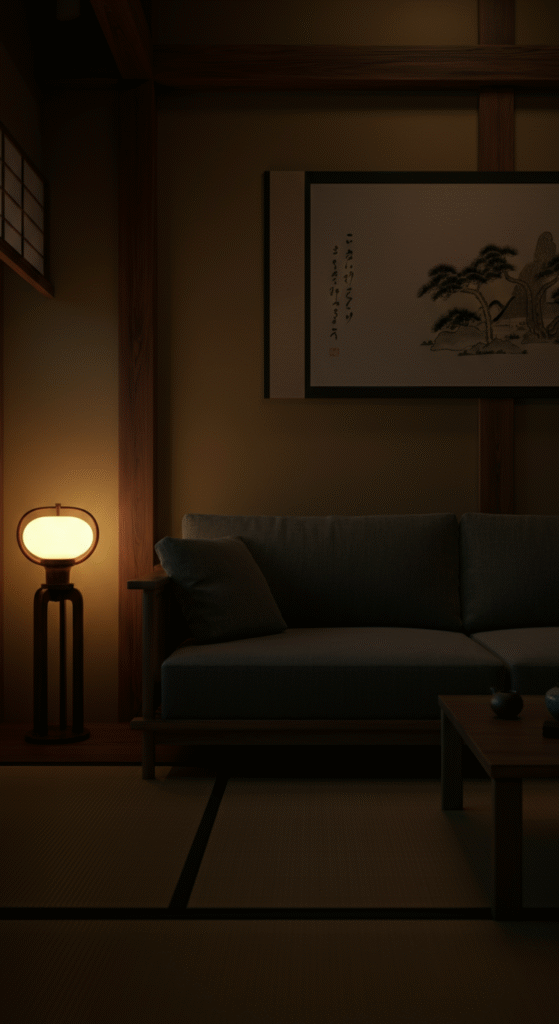
Perfection isn’t the goal — balance is. The asymmetrical layout reflects the Japanese concept of wabi-sabi, embracing imperfection as part of beauty.
Offset your sofa from the center, add a low floor lamp on one side, and place a single art piece or scroll on the opposite wall.
This layout keeps the eye engaged while maintaining visual calm.
Pair contrasting textures: rough ceramics beside smooth wooden trays, or matte walls against soft cotton cushions.
This gentle imbalance creates harmony through authenticity — something both Japanese and Scandinavian homes celebrate deeply.
6. The Minimal Social Hub Layout
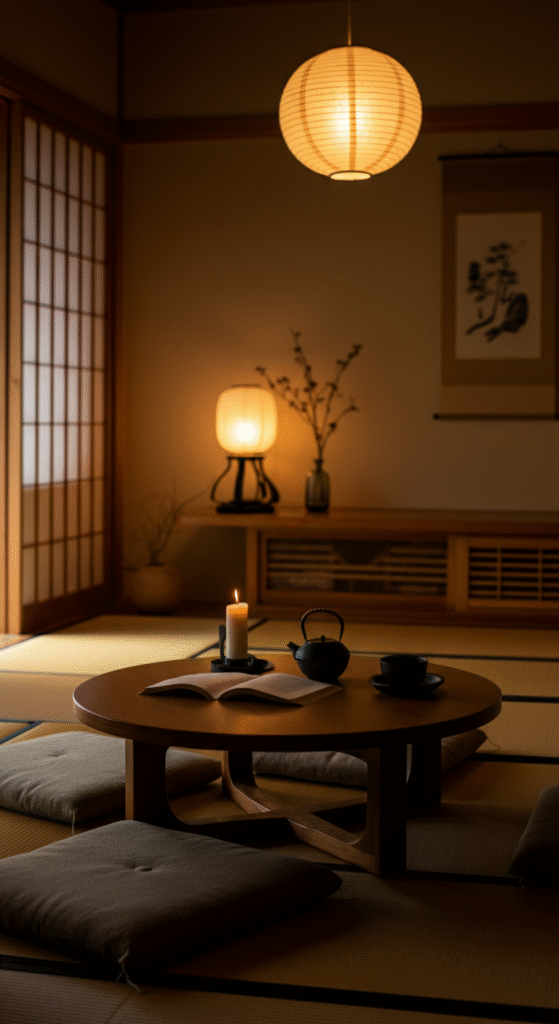
Minimal doesn’t mean lonely. The Japandi social hub layout encourages warm gatherings — minus the clutter.
Choose a round wooden coffee table surrounded by simple floor cushions or low seating. Keep surfaces clean, displaying only meaningful objects — maybe a ceramic teapot or an open book.
Lighting should be soft and layered — paper lanterns, floor lamps, or candles for a cozy yet uncluttered atmosphere.
Fact: The Japanese philosophy of “Ichigo Ichie” teaches us to cherish every meeting as a once-in-a-lifetime moment. Your minimalist social hub embodies that philosophy — mindful, intimate, and timeless.
7. The Low-Line Tranquility Layout
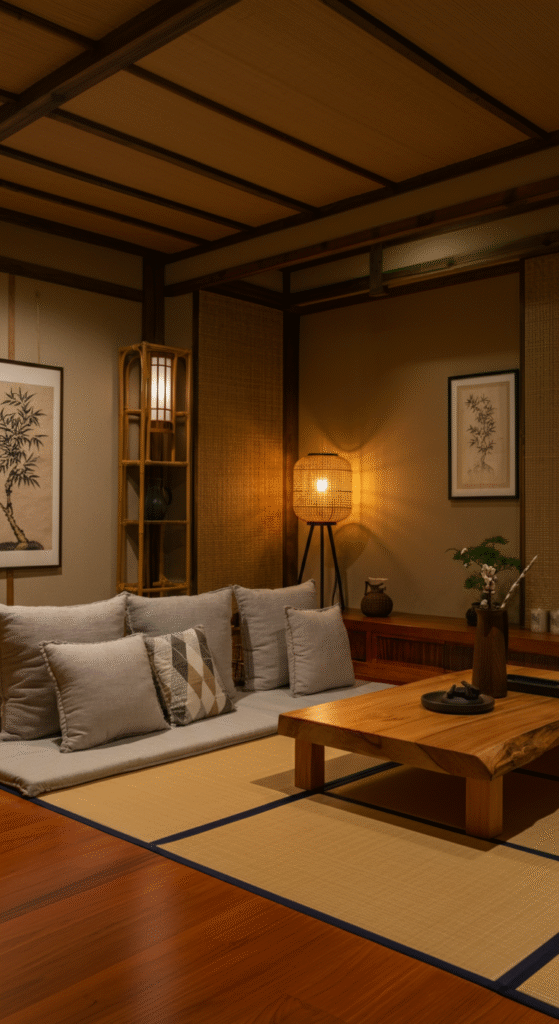
Inspired by traditional Japanese interiors, this layout focuses on low furniture — close to the ground, grounding your energy.
Opt for a low sofa or even a floor mattress setup with cotton covers and cushions. A short-legged wooden table complements the theme.
This horizontal design visually widens the space, making your living room feel serene and expansive.
Keep wall décor subtle — perhaps a horizontal art piece or bamboo wall shelf.
In the Japandi home, serenity comes from lowering not just furniture, but expectations — creating peace by simplifying needs.
8. The Textural Harmony Layout
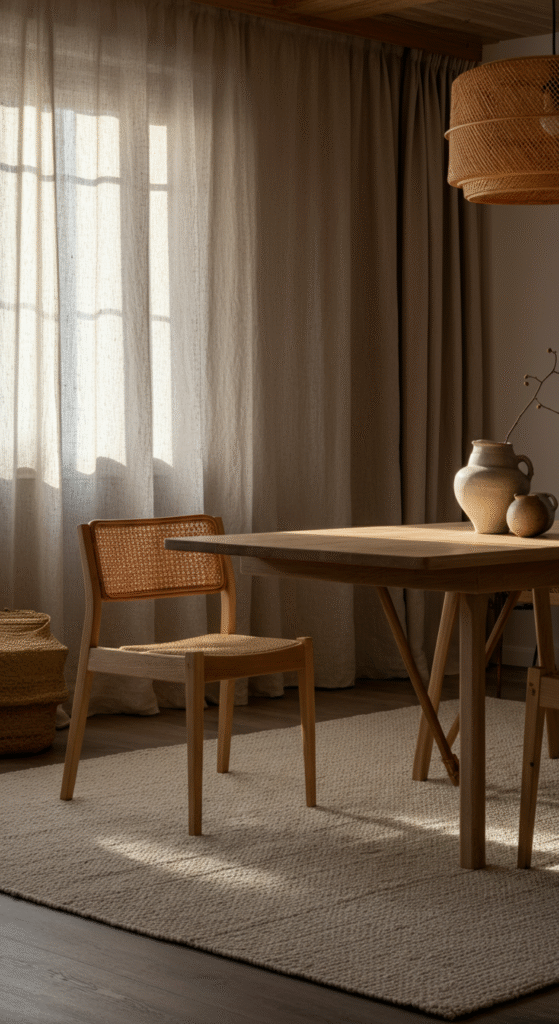
Visual calm often hides in the layers of texture. This layout revolves around tactile experiences rather than bright colors.
Combine materials like smooth ceramics, coarse linen, rattan, and unfinished oak.
The contrast between these textures adds depth and visual interest — without breaking minimalism.
You can also introduce a neutral rug under your main furniture cluster. This defines space subtly while maintaining unity.
Do you know? Scandinavian design favors tactile warmth in cold climates, while Japanese interiors use natural textures to bring seasonal awareness. Japandi unites these two ideas seamlessly.
9. The Monochrome Serenity Layout
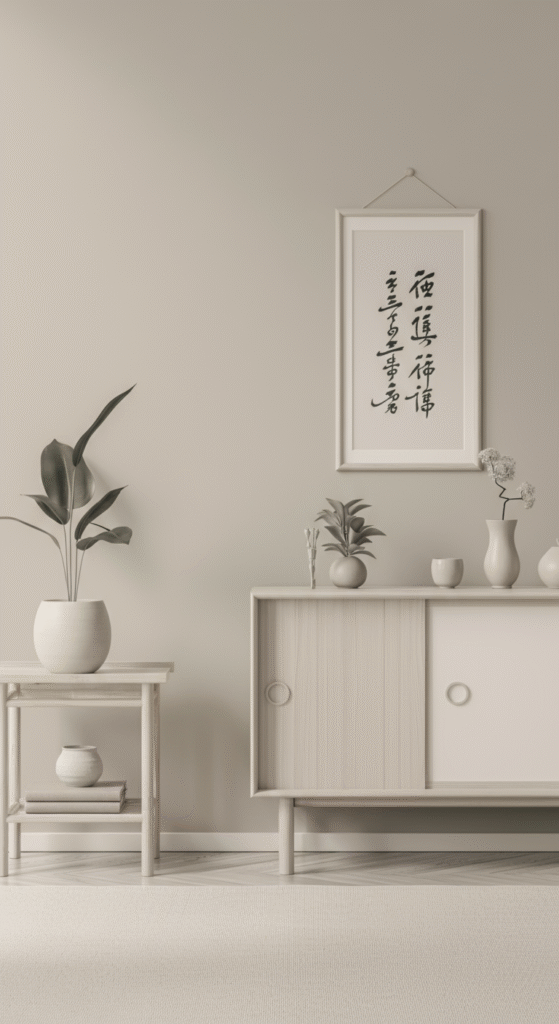
For purists, nothing speaks “quiet luxury” like a monochrome Japandi living room.
Stick to one main tone — like soft greige (gray-beige), ivory, or muted sand — and explore its shades through furniture, walls, and textiles.
This creates a unified, almost meditative environment.
Keep décor restrained — one calligraphy frame, one potted plant, one candleholder. Each item must earn its place.
This layout mirrors the Japanese art of shibui — understated elegance that grows more beautiful with time.
10. The Floating Wall & Hidden Storage Layout
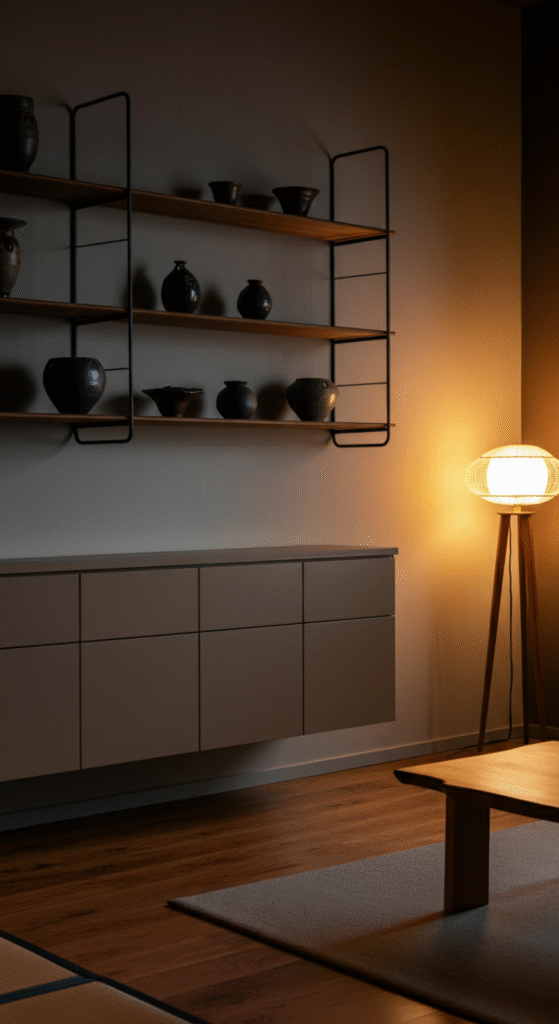
Finally, the most functional yet minimalist setup — built-in or floating storage.
Install low wall-mounted cabinets or floating shelves that blend with your wall color. They provide storage without interrupting visual flow.
Use closed units for clutter and open niches for display — a perfect balance between practical and peaceful.
In Japandi interiors, functionality is never separate from beauty; it’s part of the same philosophy.
As the saying goes in Scandinavian design: “Everything should have a purpose — or a story.”
Bonus Idea: The Tatami-Lounge Fusion
If you’re open to something truly authentic, integrate tatami mats with a modern Scandinavian lounge.
Layer neutral rugs or jute mats, add low cushions, and replace your sofa with modular floor seating.
This hybrid space feels both meditative and social — ideal for quiet evenings, tea ceremonies, or slow mornings.
Tatami-inspired layouts have become popular among digital minimalists who value mindfulness and simplicity in daily routines.
Conclusion: Living the Japandi Way
Japandi isn’t just a décor style — it’s a quiet rebellion against chaos.
Every curve, color, and corner in a Japandi living room reminds you to slow down. To value space, not fill it. To find joy in fewer, better things.
These 10 minimalist layouts are more than design choices — they’re an invitation to reimagine your living space as a sanctuary.
Because when your home feels peaceful, your mind follows.
And that, perhaps, is the real secret of serenity.
Frequently Asked Questions (FAQs)
What exactly is Japandi design?
Japandi design is a fusion of Japanese and Scandinavian interior styles. It combines the simplicity and natural materials of Japanese aesthetics (wabi-sabi) with the warmth and functionality of Scandinavian hygge. The result is a minimal, cozy, and nature-inspired atmosphere that promotes peace and balance.
How can I make my living room look Japandi without major renovations?
Start with the basics — declutter, simplify, and choose neutral tones. Introduce natural textures like wood, rattan, linen, and ceramics. Swap bright colors for soft earthy hues such as beige, taupe, sand, and sage. Add plants, floor cushions, or low wooden furniture to bring warmth and authenticity.
What colors are best for a Japandi-style living room?
The Japandi color palette is rooted in nature. Think creamy whites, warm beiges, charcoal grays, and soft browns. You can also layer subtle tones of green, muted blue, or clay for variety. Avoid anything too glossy or vibrant — the goal is calmness, not contrast.
What furniture suits a Japandi minimalist layout?
Opt for furniture that is low, simple, and functional. Clean lines, smooth edges, and handcrafted materials define the style. Wooden pieces (like oak, ash, or bamboo) paired with linen or cotton upholstery work perfectly. Avoid excessive ornamentation — every piece should serve a purpose.
How do I achieve balance between Japanese minimalism and Scandinavian warmth?
Use the Japanese concept of Ma (the space between objects) to create openness, while applying the Scandinavian idea of hygge to add comfort. This means you can have cozy throws or candles, but without crowding the room. Keep harmony between emptiness and warmth.
